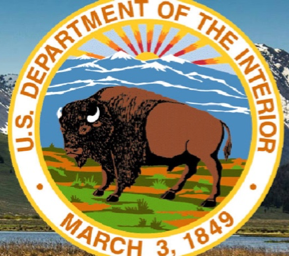What the Country’s First Indigenous Secretary of Interior Would Mean for Environmental Policy

by Cassandra Basile, 3L, Fordham Environmental Law Review
After the midterm elections in 2018, Indigenous representation in Congress surged. This year, six Native Americans will serve as representatives in Congress for New Mexico, Hawaii, Kansas, and Oklahoma; four were reelected and two were newly voted in. Now, with an incoming Biden Administration, there is a push for the President Elect to name the first Native American Secretary of Interior. The two major candidates for the position are Deb Haaland and Michael L. Connor. Ms. Haaland made history as one of the first two Native American women to be elected to represent Kansas in Congress back in 2018. However, critics cite her lack of policy experience makes her an unviable choice when compared to Mr. Connor, who was a deputy Interior secretary under the Obama administration. Regardless, if either are appointed, it could mean major changes for U.S. Environmental Policy.
Since 2016, the Trump Administration has rolled back over 100 environment rules, rushed to mine native lands, extended oil and gas leasing on federal land, and endangered ecosystems and sacred sites with its border wall. These policies have led to a general disregard of scientific data about the risks of climate change, but the new Secretary of Interior will have the power to combat and reverse some of these Trump Era policies. Moreover, the appointment of the first Indigenous Secretary of Interior would be a powerful and symbolic act, given the history of racist federal policies that marginalized Native Americans.
Many Democrats support the move to appoint the country’s first Indigenous Secretary of Interior, as it would allow the Biden Administration to push a more aggressive climate policy. The new Secretary will be responsible for over 500 million acres of public lands, including national parks, oil and gas drilling sites, endangered species habitats, and, of course, the well-being of 1.9 million Indigenous people. However, though the increased representation of Native American’s in Congress over the last four years is to be celebrated, not all indigenous representatives share such liberal views when it comes to environmental policy. For example, Oklahoma Representatives Markwayne Mullin, member of the Cherokee Nation, and Tom Cole, member of the Chickasaw Nation, are both Republicans who supported President Trump’s policies. And then there’s Yvette Herrell, a member of the Cherokee Nation and representative elect for New Mexico’s second congressional district. Ms. Herrell has vowed to “work with President Trump to reduce job killing regulation, cut taxes for our middle class, and rebuild our rural economies by opening the door to logging, mining, and expanded energy production.”
Though Biden has made no announcement yet of his definitive pick for Secretary of Interior, many progressives are concerned based on his current nominations. Specifically, progressive climate groups have expressed concern about the appointment of senior staffers with ties to the oil and gas industry, like the appointment of congressman Cedric Richmond as the next director of the White House Office of Public Engagement. Additionally, others are concerned that Biden is not meeting progressives halfway with his current picks, as he has relied on appointing a lot of Obama-era holdovers. These appointments are worrisome to progressives, as climate issues have worsened since 2009. If Biden continues with this pattern, Mr. Connor looks like an attractive pick for the Secretary of Interior, despite Ms. Haaland’s popularity among the people.

